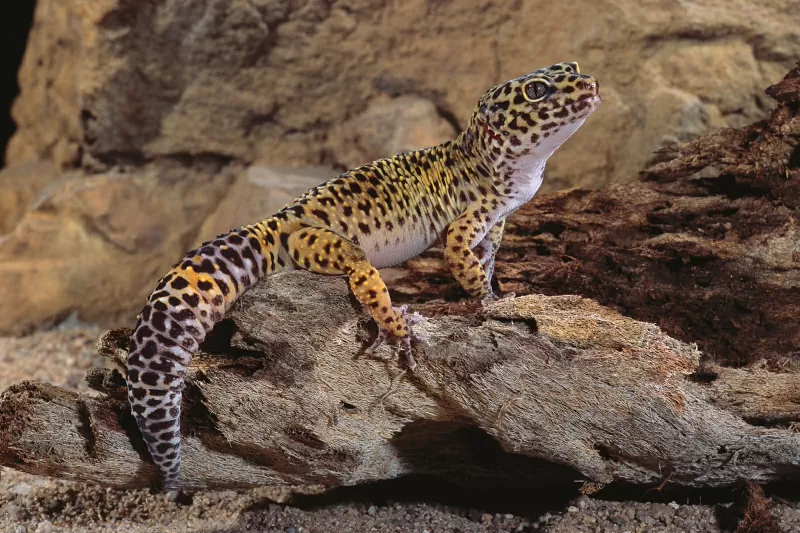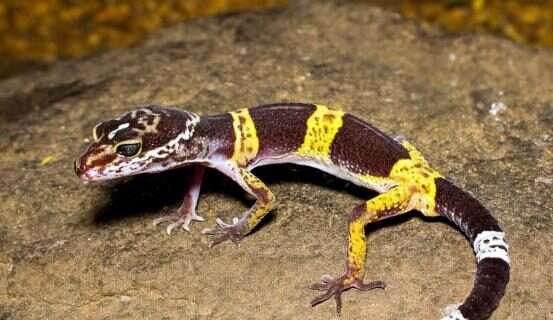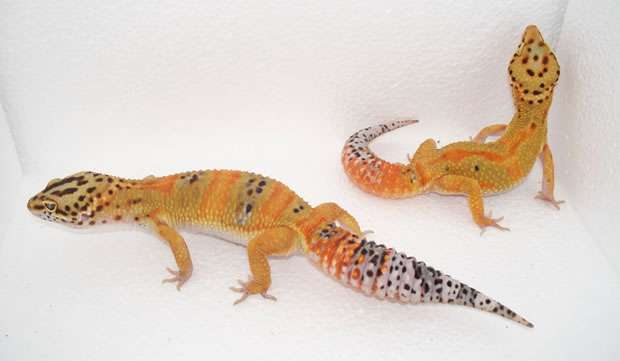
Description:
Scientific name: Eublepharis macularius
Life span: 15 years
In contrast to other reptiles, leopard geckos have eyelids, are lengthy, have huge heads, big eyes with oval-shaped pupils, and tiny toes. Like their bodies and heads, their thick tails taper to a point and are slightly flattened from top to bottom. Their majority of scales are tiny and coarse. They appear knobby and harsh due to rows of bigger, bumpy scales that are spaced apart, yet when touched, they are actually soft.
Native Region/Habitat
In southern Central Asia, Pakistan, Afghanistan, northwest India, and portions of Iran, the leopard gecko can be found in arid rocky areas, dry grasslands, and deserts.
Behavior:
Leopard By nature, geckos are calm and sociable animals, although they can bite. When in a person’s hand, they won’t bite unless they mistake a finger for food or they’re being held too firmly.
Care As a pet/In captivity:

Diet
- primarily insectivorous; they feed on a range of prey items such crickets, mealworms, superworms, phoenix worms, flies, roaches, etc.; they occasionally take advantage of pinkie mice as well.
- Prior to feeding your gecko, prey insects should be “gut loaded” with a nourishing diet for at least 12 hours. Most pet stores carry this powdered gut loading diet for feeder insects.
- 3–4 times each week, dust feeder insects with a calcium supplement. The calcium powder can also be offered in a small dish.
- Instead of feeding larger meals less frequently, provide smaller, more frequent meals (3–4 insects each day).
- A modest water dish should be available for drinking and soaking.
Environment
- For 1-2 people, a 10–20 gallon tank or comparable cage should be adequate.
- A solitary, reclusive species that needs a hiding box. If necessary, the gecko should be able to be quickly and easily extracted from this habitat.
- Provide a moist hide box (with moistened peat moss, vermiculite, or paper towels inside), mist the tank daily, or use a humidifier or reptile misting system. Needs the right humidity for healthy shedding.
- Your lizard will benefit from the temperature variation provided by heating one end of the cage. Set up a temperature gradient with the heated side at 85–90°F (29.4–32.2°C) and the cool side at 78–80°F (25–26.7°C). At night, cage temperatures can fall into the 70s.
- A heat lamp or ceramic heat emitter positioned above the enclosure work best as a heat source. Hot pebbles and under-tank heaters are less secure and efficient.
- It is advised to use UVB lighting that is at least 5.0% UVB for 12 hours per day. At night, the cage ought to be dark. Leopard geckos are nocturnal, although both direct and indirect UVB exposure is good for their general health.
- Encourage the use of a non-particulate substrate, such as newspaper, paper towels, or reptile carpet, as sand and other materials can irritate the eyes and cause impactions if swallowed.
Table





